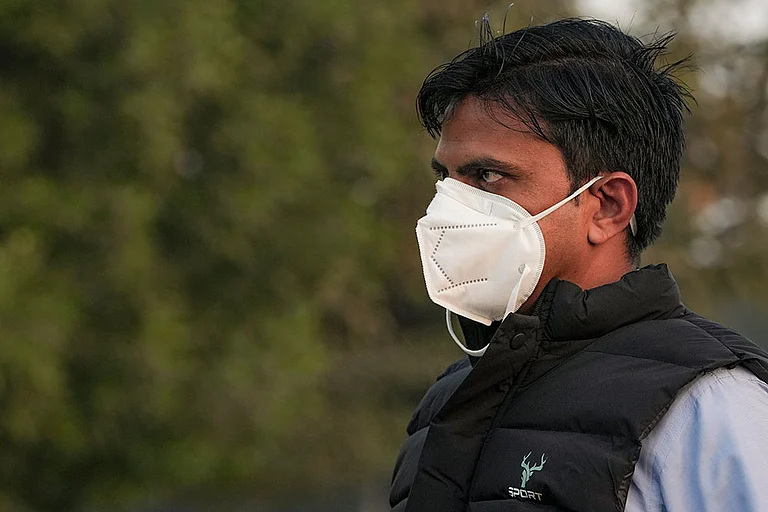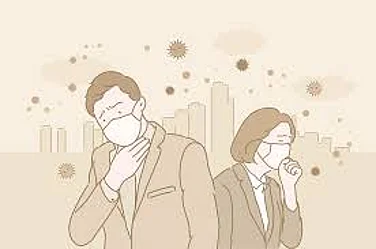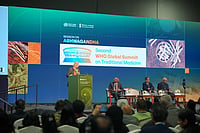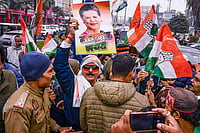Why do mosquitoes still find their way through fabric despite layers of clothing? It is a question many have asked while battling persistent stings, sleepless nights and the growing burden of vector-borne diseases.
Even as a national survey conducted by LocalCircles platform last year showed that nearly nine in ten Indian households spend money each month to defend themselves from mosquitoes on coils, sprays, creams or electric repellents, yet bites continue, infections surge annually, and the risk lingers long after the smell of repellent fades.
It is this persistent gap in protection that researchers at the Indian Institute of Technology (IIT) Delhi say they are attempting to bridge — not with another lotion or spray, but with something as routine as washing clothes.
“We have developed smart detergents to protect people from dangerous mosquito-borne diseases. The products have been tested in a commercial laboratory and have proven effective at repelling mosquitoes,” said Prof. Javed Nabibaksha Sheikh, Department of Textile and Fibre Engineering, IIT-Delhi.
Such a need has been consistently felt with the persistent burden of vector borne diseases such as malaria, dengue and chikungunya.
The textile-safe mosquito-repellent detergent is formulated to make clothing inherently unattractive to mosquitoes. Unlike creams, coils, liquid vaporizers, roll-ons and patches — all of which act externally and temporarily — this innovation embeds protection where the mosquito strikes: on the fabric itself, he added.
The laboratory evaluations have shown a significant reduction in mosquito landings on treated textiles, offering a passive yet continuous shield for the wearer.
To assess real-world effectiveness, the researchers employed a hand-in-cage test, a widely used method in entomological studies. Volunteers placed their hands, covered with washed fabric samples, into an enclosure containing starved mosquitoes. The number of landings — a precursor to bites — was recorded and compared with untreated textile panels. Fabrics washed with the IIT-developed detergent showed sharply fewer landing attempts.
The detergent’s active compounds attach to textile fibres, influencing both olfactory and gustatory receptors in mosquitoes. In simple terms, treated fabric smells and tastes ‘wrong’ to the insect, triggering aversion. The effect does not permanently sit within a garment but is regenerated with every wash, ensuring sustained utility in households where clothes are frequently laundered.
“The active components of detergents interact with fibers during the washing process, making them less attractive for mosquito landing. The active components work on both the smell and taste sensors of the mosquitoes,” Prof. Sheikh added.
So how do mosquitoes manage to bite through the fabric? Experts explain that a mosquito’s mouthpart — the proboscis — is a highly specialised apparatus made up of six slender, needle-like stylets. Its structure allows it to glide through loosely woven or lightweight fabric with ease.
The proboscis is fine enough to locate microscopic gaps between textile fibres, pierce through them, and reach the skin underneath. This is why even full-sleeve shirts or thin garments may offer little protection, especially during peak breeding seasons when mosquito activity is intense, as per the experts.
IIT-Delhi has already filed for a patent, marking progress toward commercial development. Once scaled, the product could enter everyday markets alongside regular detergents, eliminating the need for separate topical repellents or wearable accessories — particularly in high-transmission regions and low-resource settings.
The innovation comes at a time when India continues to report periodic spikes in mosquito-linked illnesses despite sustained public health campaigns.
Behavioural prevention — bed nets, repellents, clothing coverage — remains heavily dependent on individual use and continuity. A wash-and-wear protection method could lower that barrier, integrating prevention quietly into daily routine.
Many mosquito-borne diseases in India are seeing an increase, particularly dengue, malaria, and chikungunya, exacerbated by factors like climate change and urban growth. Stagnant water from monsoon rains and urban development provides breeding grounds, and rising global temperatures may be expanding the range and active season for disease-carrying mosquitoes.


























